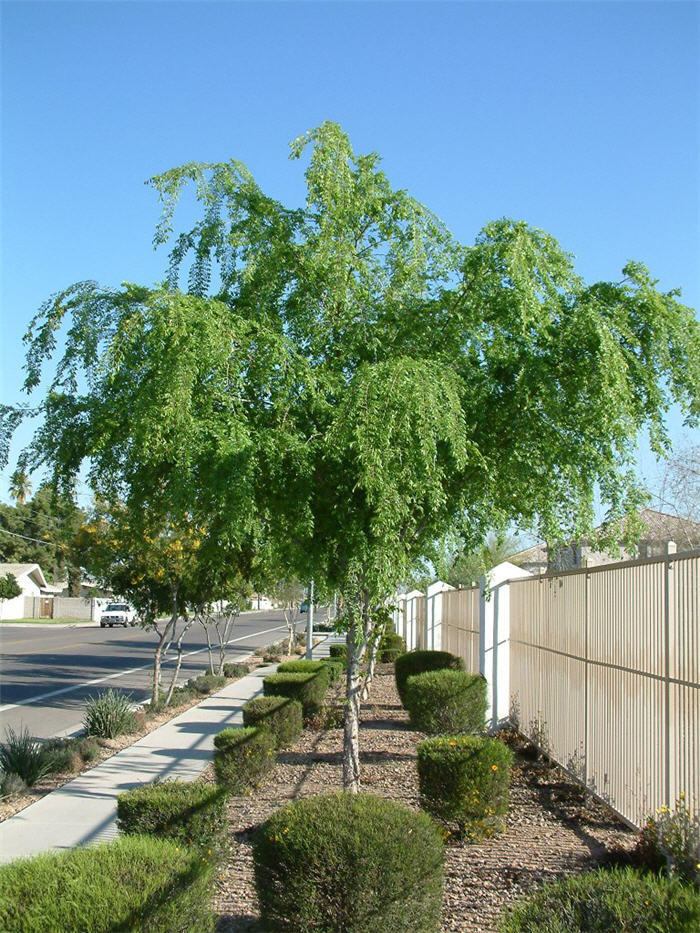| Botanical Name: Ulmus parvifolia | |
| Common Name: Lacebark Elm, Chinese Elm |

-
Anatomy
-
Culture
-
Design
Plant Type
Tree
Height Range
40-60'
Flower Color
Green, Yellow
Flower Season
Summer
Leaf Color
Green
Bark Color
Brown, Grey
Fruit Color
Brown
Fruit Season
Fall
Sun
Full
Water
Low
Growth Rate
Fast, Moderate
Soil Type
Sandy, Clay, Loam, Rocky, Unparticular
Soil Condition
Average, Poor, Well-drained, Moist, Dry
Soil pH
Acid, Neutral, Basic
Adverse Factors
n/a
Design Styles
Formal, Japanese, Woodland
Accenting Features
Fall Color, Specimen
Seasonal Interest
Winter, Spring, Summer, Fall
Location Uses
Background, Patio, Park, Street Tree
Special Uses
Shade Tree
Attracts Wildlife
n/a
Information by: Stephanie Duer
Photographer: Normans/Brad Smith
Photographer: Normans/Brad Smith
-
Description
-
Notes
Graceful, round-headed tree often with pendulous branches. Lacebark Elm grows moderately 40 to 50 feet, with a spread of 25 to 40 feet. Small, deep green, lustrous leaves turn yellow or orange in fall. Small, greenish yellow flower appear in summer, followed by small light brown fruit; both are insignificant. Bark is brown gray but with maturity, exfoliates to reveal orange, gray, green and brown inner bark. Excellent shade tree.
Do not confuse this elm with the Siberian elm, a weedy tree with prolific seed and prone to disease. Lacebark is a durable, tough, beautiful tree. Adaptive to a variety of soil ph, even in the extremes. Fastest rate of growth with regular water in good, well drained soil, and in full sun. But avoid over-watering, as the pratice encourages shallow roots. Resistant to Dutch Elm disease and phoem necrosis.